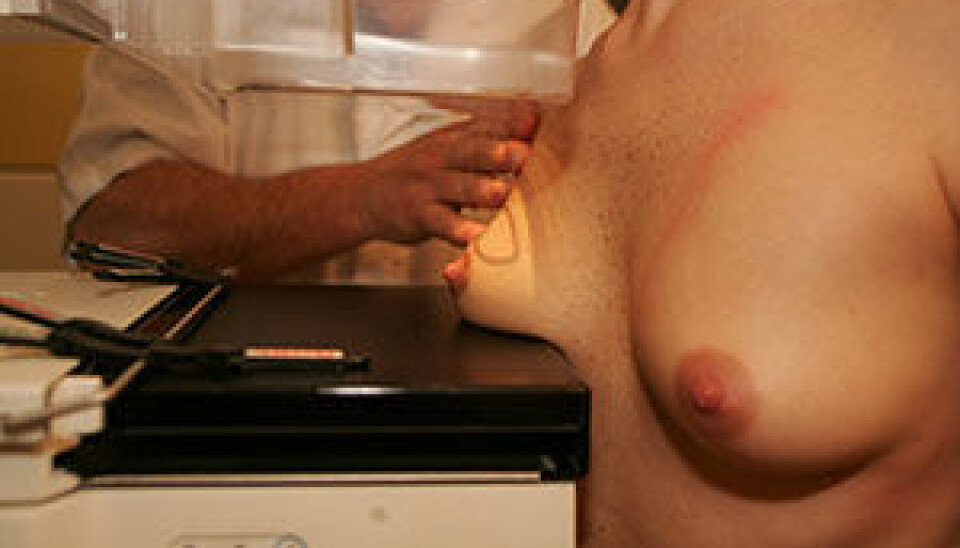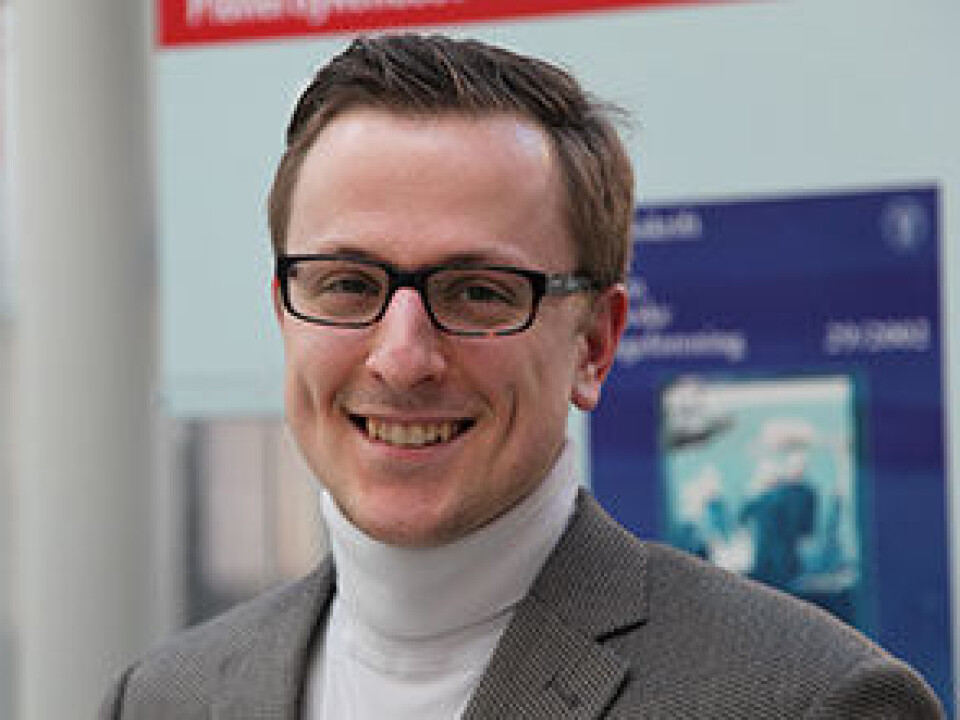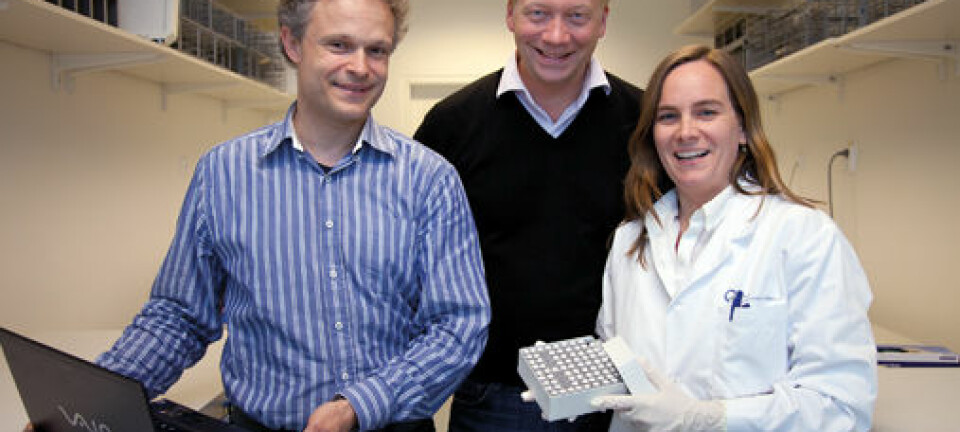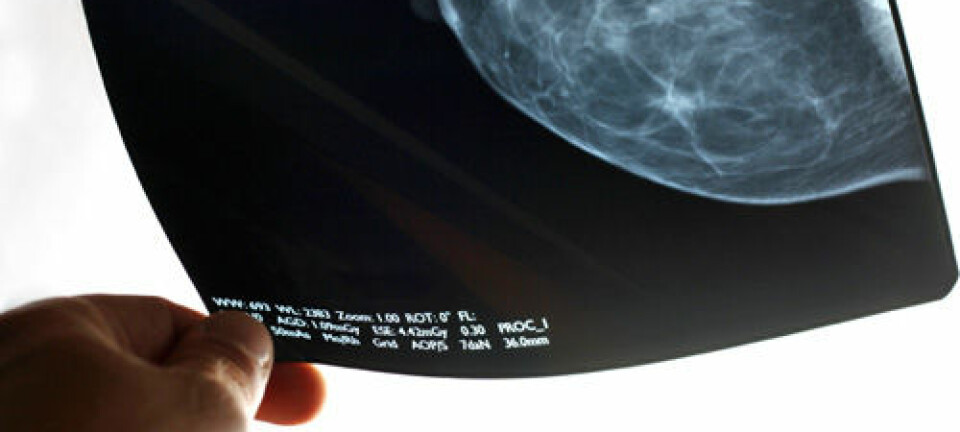An article from University of Oslo

Sugar molecules blow the whistle on breast cancer
Sugar molecules in the body play a far more important part in the development of breast cancer than was previously believed.
Denne artikkelen er over ti år gammel og kan inneholde utdatert informasjon.
There are sugar molecules in every cell of the body. But they change early and drastically in the course of cancer.
"If we manage to detect the tiny change that occurs in sugar molecules, we may be able to discover the transition to disease at an early stage", says research student Ivan Potapenko.
He has studied how a special type of sugar molecule can help to reveal when cancer is in the offing. A new twist to a well-known method provides detailed information about the behaviour of the molecules.
"Our goal has been to improve the diagnosis of breast cancer", says Potapenko.
Change heralds disease

The tiny sugar molecules, known technically as glycans, are interesting micro-objects. Because they change so early in the preliminary stages of cancer, they are excellent whistle-blowers on the cancer that is trying to gain a foothold.
2800 women receive a diagnosis of breast cancer in Norway each year, and each year 700 women die of the disease. As a woman, you have an eight per cent risk of developing breast cancer before you turn 75.
"Although the treatment is good, there is still a great deal to be gained by tailoring it even more closely to the individual patient. One way of doing this is by making a more detailed subdivision and risk classification. Early and more precise diagnosis is also needed", says Potapenko.
Changes at different times
Scientists have known for a long time that these sugar molecules change in the presence of cancer. The problem is that it is difficult to measure these changes.
Different sugar molecules change at different times in the course of the disease.
This knowledge may be very valuable.
"We can use the changes that occur early for diagnostic purposes, or for developing vaccines. The changes that occur late can be used in treatment", says Potapenko.
"We also saw that some genes correlated with survival. These can be used as prognostic markers, which we badly need."
A lump - what now?
There are different types of breast cancer. Some are fairly mild, others very aggressive. The cancer type has a bearing not only on the choice of treatment method, but also on when it is necessary to intervene.
Some patients are at an intermediate stage. They have not developed cancer, but cell changes have been detected. It is difficult to give these patients a prognosis at present. What are doctors actually supposed to do if a patient feels a lump in her breast?
"We see that it is not cancer, but the precursor to cancer. Should we wait and see? If we do, there is a risk that cancer will develop. But if we remove the breast, we inflict both physical and mental harm on the woman - and perhaps unnecessarily, if the cell changes are later found to be of a type that is highly unlikely to progress to cancer. So it's a dilemma", says Potapenko.
Maybe the dataset from the study will show us the way to go.
"We were able to use gene signatures to distinguish between women with a good and a poor prognosis. It is difficult to do this with the clinical methods in use today. In the future it will be possible to use this information to optimise personally tailored treatment for breast cancer patients", explains Potapenko.
Detour yields new knowledge
"We wanted to look at the genetic basis of glycan synthesis and the process whereby the sugar molecules are placed on the cells", says Potapenko.
Inside cells, various proteins are produced to which sugar molecules become attached. It is possible to measure the sugar molecules directly, but it is extremely complicated. The solution may be to take a little detour - and look at enzymes that synthesise sugar molecules and attach them to proteins.
"We chose an indirect way of measuring the sugar molecules", explains Potapenko.
"We measured the level of the genetic material that is translated into enzymes. We selected only the genes that we wanted to study. This has never been done before on such a large scale.
Potapenko and his colleagues selected relevant genes. Then they measured the levels of the genetic material in patients with breast cancer, healthy persons and persons who had not yet developed cancer, but were at a precursor stage of cell changes. Thus it was possible to analyse the level of the selected genes from healthy to borderline to malignant.
"We saw that many of the changes occurred as soon as the genes were differently expressed. At the same time, we found that these genes showed altered expression at a number of different times during the period between healthy and diseased. In the future we will be able to use this knowledge to develop new methods for earlier diagnosis and treatment" says Potapenko.
---------------------------
Read the Norwegian version of this article at forskning.no

































